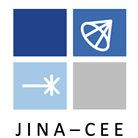Most of the elements that we see everyday like iron or gold, or fundamental for life like carbon and oxygen, are produced in stars. The fundamental question of how elements form in our galaxy and in the universe need the contribution from many disciplines, within the cross-disciplinary context of nuclear astrophysics.
NuGrid and the EA Milne Centre for Astrophysics organize a 3-day training school event on the topic of nuclear reaction rates, stellar nucleosynthesis, observations and implications for galactic chemical evolution.
In order to prepare students and post-docs for explorations in these science areas the school will include among others an introduction to:
-
Running network codes and analysing data, within a flexible framework for nuclear astrophysics simulation experiments;
-
Tools and examples for nuclear uncertainty studies;
-
Galactic chemical evolution with NuPyCEE.
The goal of this training school is to document present state of knowledge and discuss key open questions in nuclear astrophysics, and to allow young scientists to practise and actively engage with these different interdisciplinary topics. Trainees will learn how to use software tools that will enhance their research and their exploitation
The school is organized in the week following the NuGrid meeting, and in the same week of the UK BRIDGCE collaboration meeting "Stars, Supernovae and Nucleosynthesis V" (20th-21st September 2018),
We acknowledge support from the JINA-CEE Center for the Evolution of the Elements, from the “ChETEC” COST Action (CA16117), supported by COST. COST (European Cooperation in Science and Technology) is a funding agency for research and innovation networks. We acknowledge the Department of Communication and External Relations, Universidade Nova de Lisboa - FCT for the ChETEC logo. We thank support from the EA Milne Centre for Astrophysics.






